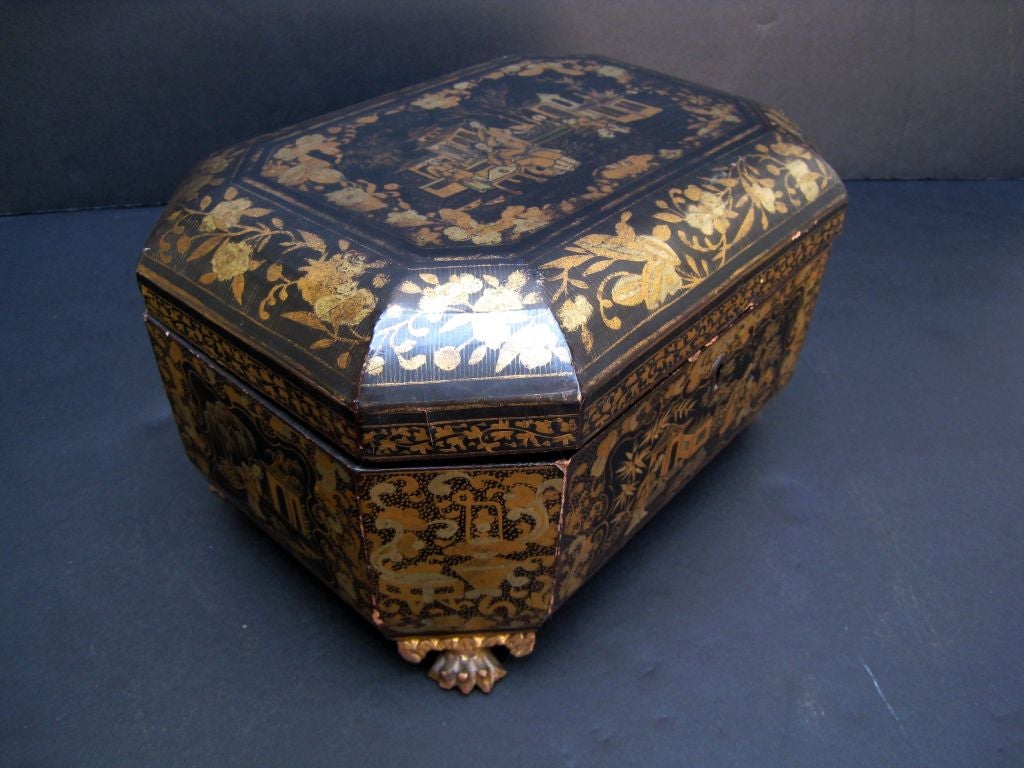
Guests go to the garden for a rest after eating, which is called "a standing in middle time".Guests return to the tearoom again and take seats, which is called "last sit". After this, the host offers some tea biscuit. The second step is "primary coaling":appreciating the host’s coaling skill. Then they step into the tea room and take seats, which is the first step called "primary sit". If guests coming in advance, they should sit in a straw shed of garden to appreciate the garden and the diligent of host. The host should clean up the tearoom and its related garden (tea garden). Prior in tea party, the host must understand the guests and companies, preparing fine tea, fine water and tea flower, tea biscuits and other food materials.
Japanese wooden tea box full#
Besides, there are tea ceremony for open and close of a forum, for farewell, for enjoy the beauty of snow, for a guest and a host, for looking for the beautiful flowers and for admire the full moon. Now there are seven tea ceremony including morning tea, daybreak tea, noon tea, night tea, after-meal tea, theme tea, and temporal tea. In ancient time sado consists of morning tea, afternoon tea, and night tea in accordance with the time of meal. With the belief of "one time in life", hosts and guests value sado and realize that life is like the foam of tea vanishing in a twinkle, from which people resonate with each other, and realize that they are an integrated unit and interdependency and the rich of life.

Buddhist idea of uncertainty urges people to cherish every second and things in life. When holding a tea party, Japanese all have an idea of "only meeting this time" that actually reflect the Buddhist "idea of uncertainty".
Japanese wooden tea box windows#
The small the teahouse is, the more the windows are, increasing the open feeling of space and also performing sado ideas - "striving to harmony and mean". Made of battens and bamboo poles, the window made of bamboo is more solid than the window close to the bottom of wall, can be opened more broadly. A small window is created for special lighting by remaining an area non-plastered. All of this expresses the idea of uncertainty. It is only a cabin in moor or a plain shelter, which is like weeds that may return to wild for its loose banding at any time and meaningless bamboo. For the thatch roof and common construction material made from delicate bamboo. Teahouse is designed into the temporal building with fixed time of use. In the ideas of Taoism and Zen, the true beauty gain through mentally. From surface to inside, the teahouse shows the "unbalanced" beauty everywhere, which reflects Taoism with Buddhist Zen features contained in Japanese sado. Therefore there is no privilege that everybody must kneel into the room to feel the state of forgetting their earthly existence. The entrance is about 73 cm high and 70 cm wide, made by two and a half used planks, with sash rail inside and nail cap appeared without cover. The entrance that only allows kneeling into. After entering the room, people should first keel down before the niche to pay their topmost tribute to it and read the ink writing of Buddhist Zen and appreciate tea's flower. It is necessary in every teahouse and thought to be divine. In his book the Book of Tea, Okakura Tenshin asserts that "the plain and pure of teahouse is a copy of Buddha hall". Many unique structures exist in Japanese teahouse, such as wall, little entrance requiring kneeling into, unbalanced architectural structures windows that near the bottom of wall and windows made by bamboo. Therefore Japanese teahouse is also called "cottage" or the "room of empty".

It is constructed only by soil, sands, wood, bamboos and other construction material with its surface without polishing. Japanese teahouse consists of tearoom, the room for store water, porch and rain road (an open- air road) connecting tearoom and porch.

Zen's thinking and form has impact on most sectors of Japanese culture including: architecture, garden, music, calligraphy, marital art and design of the building that in particular for sado service. Generated from the oriental culture, Japanese sado fully performs it.īuddhism is the ideological background of Japanese sado and Zen is its core. It has developed into the standard and ideal of Japanese daily life and culture". Another expert Kuwada Nakaoya believes that "sado is no longer the plain interest and entertainment only. The definition "sado is a comprehensive cultural system" raised by an expert Hisamastu Shinichi has won universal agreements. Rooted in the daily life, Japanese sado is a comprehensive cultural and art activity combing daily behaviors, religion, philosophy, ethics and aesthetics. Although Japanese sado is originated in China, it has its distinct characters of Japan and unique meaning.


 0 kommentar(er)
0 kommentar(er)
